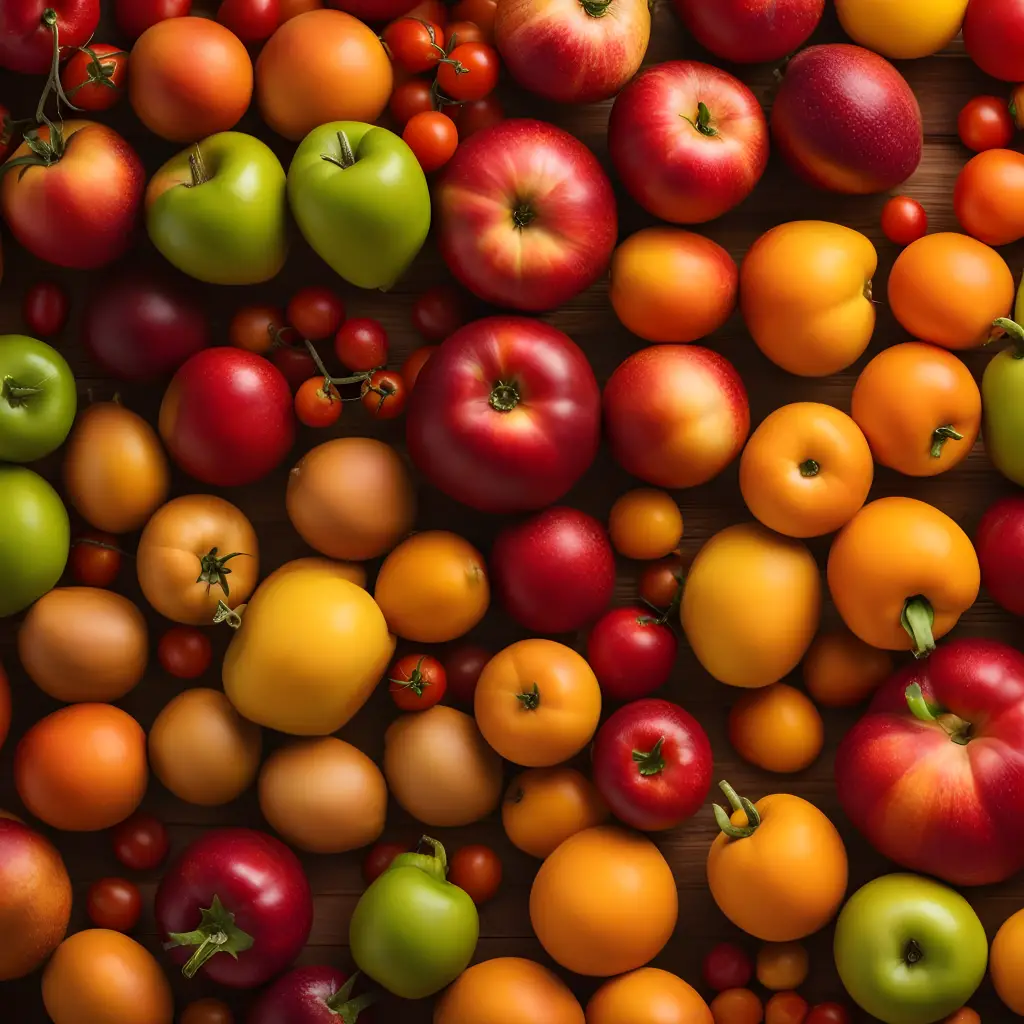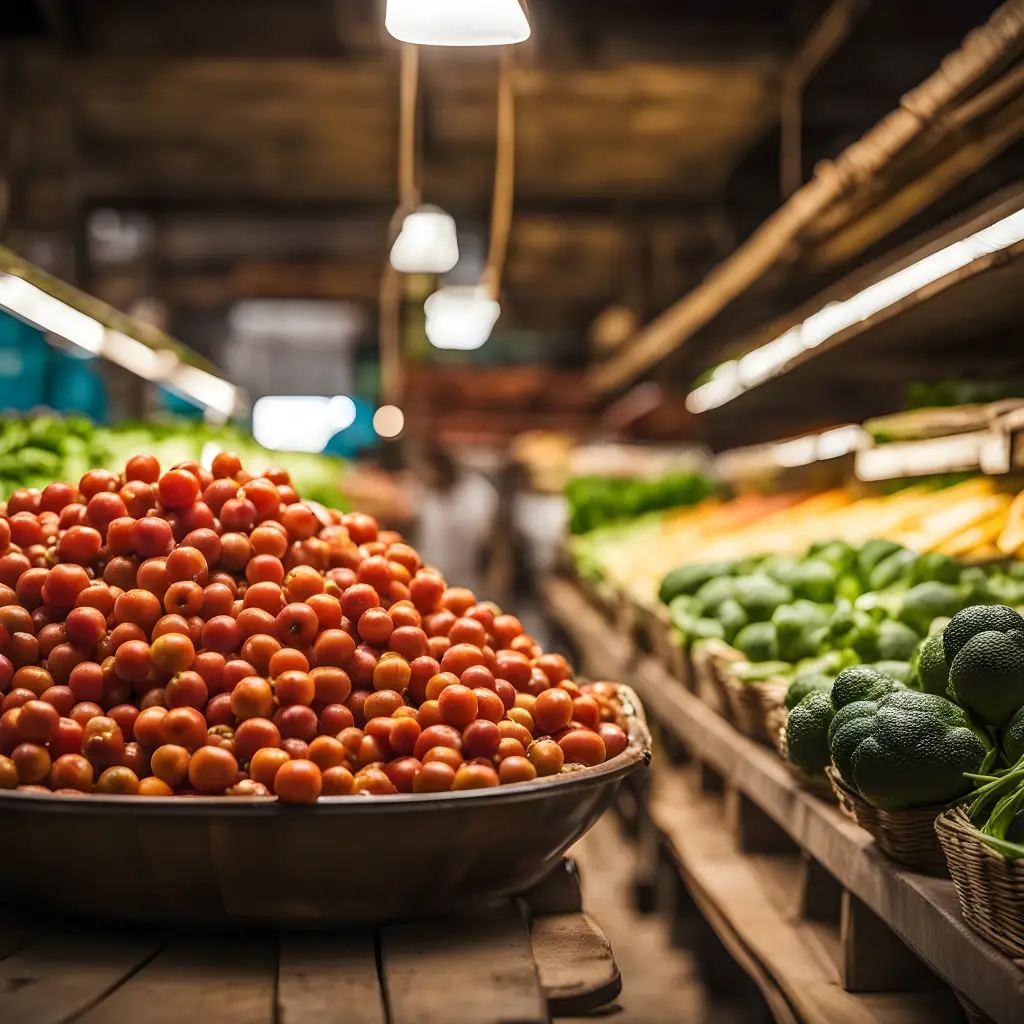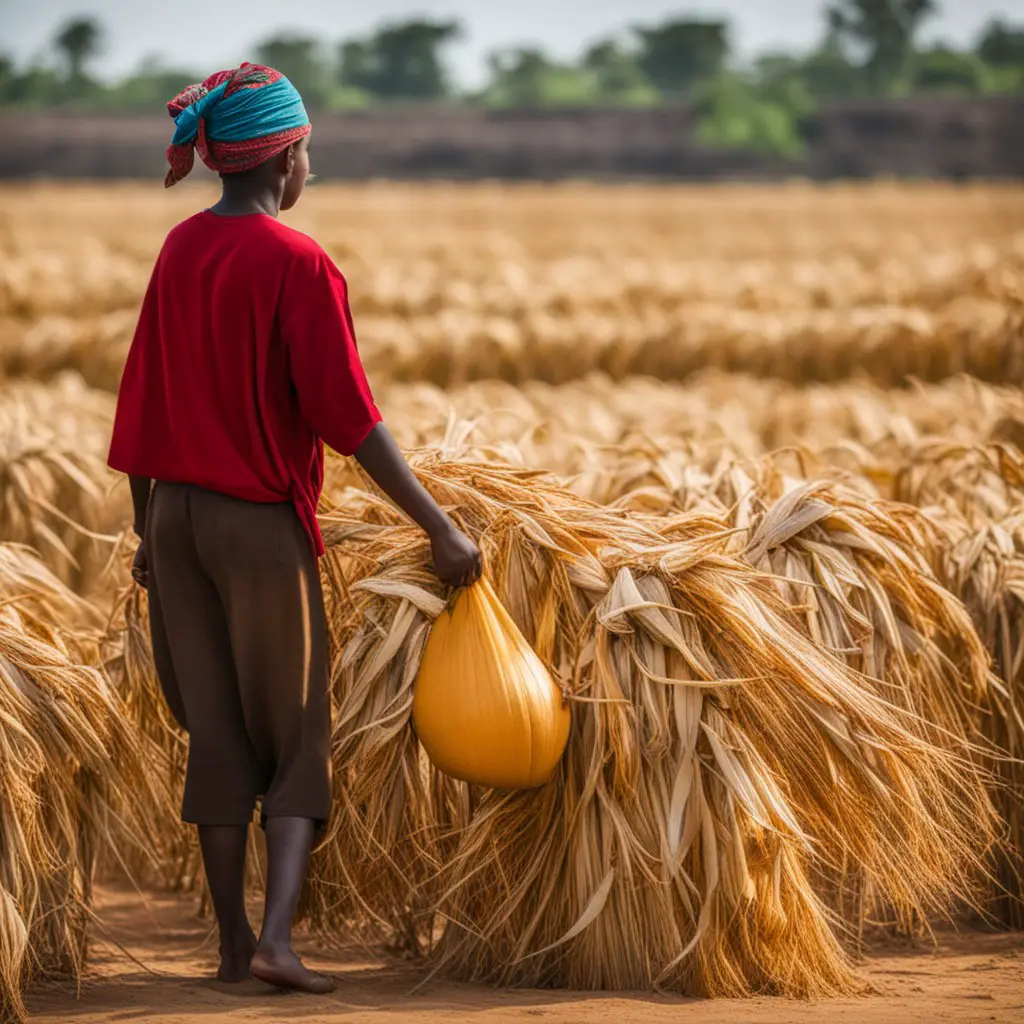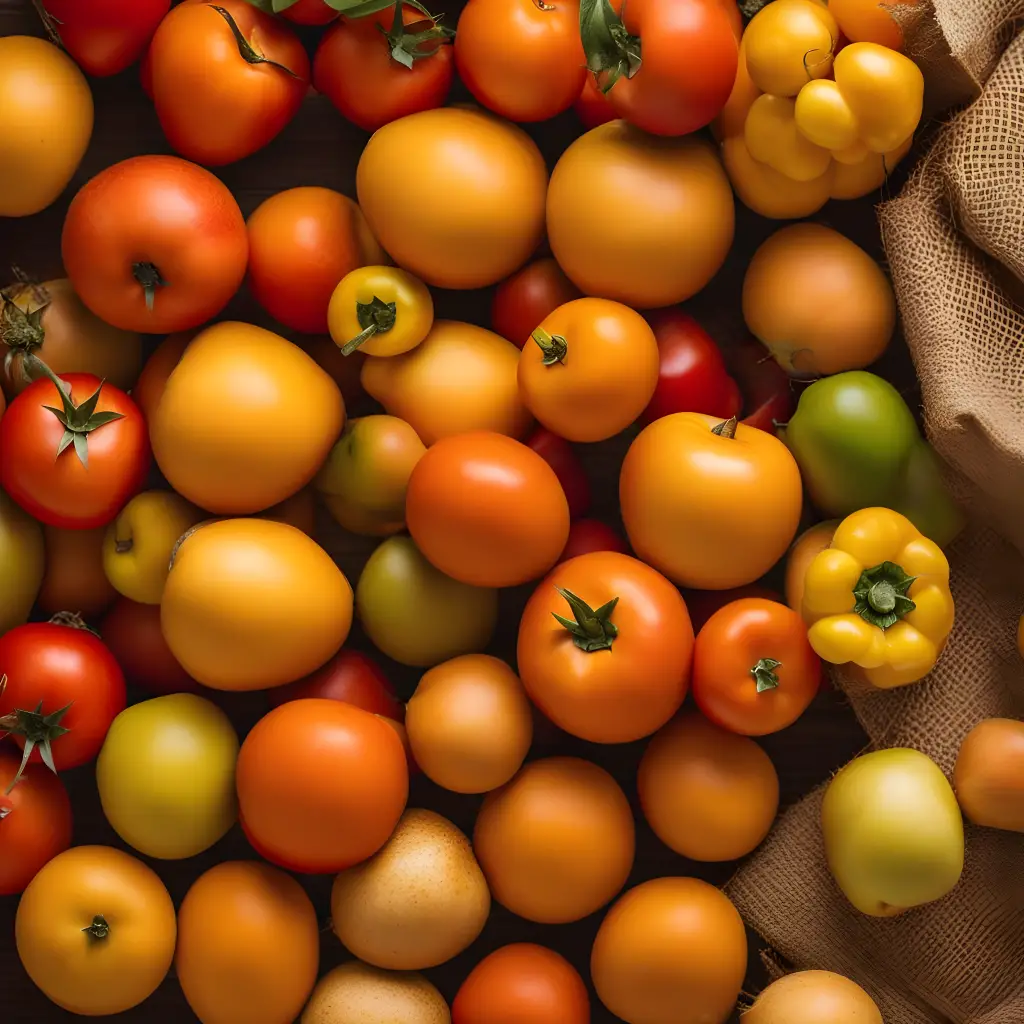Will There Be A Food Shortage In 2023? Are you concerned about the possibility of a food shortage in 2023? With the world’s population continuously growing and the effects of climate change becoming more apparent, it’s a valid concern.
In this article, we will explore the potential factors that could contribute to a food shortage, such as the impact of a growing population on food production and the effects of climate change on crop yields. We will also discuss the challenges in supply chains and food accessibility, as well as the potential consequences of food scarcity. But don’t worry, we will also delve into strategies that can be implemented to ensure food security in the future. So, Will There Be A Food Shortage In 2023?
The possibility of a food shortage in 2023 is a concern that many people have been discussing. Several factors contribute to this concern, including climate change affecting crop yields, supply chain disruptions due to the ongoing pandemic, and geopolitical tensions that can impact trade and food distribution. It’s essential to monitor these developments closely.
As the global population continues to increase, the demand for food is also rising. This puts immense pressure on food producers to meet the growing needs of the population. However, various factors can hinder food production, such as limited arable land, water scarcity, and a lack of agricultural innovations.
Additionally, climate change poses a significant threat to crop yields, as extreme weather events like droughts and floods become more frequent. These factors combined could potentially lead to a food shortage in the near future. But what would that mean for you and your loved ones?
Stay tuned to find out more about the potential consequences of food scarcity and the strategies that can be implemented to ensure a secure food supply.
The Impact of Growing Population on Food Production

You might be wondering how the growing population will affect our ability to produce enough food. With population growth on the rise, the demand for food is increasing at an unprecedented rate. This puts immense pressure on our agricultural productivity to keep up with the ever-growing needs.
As more people enter the world, the need for sustenance becomes even more critical. However, our ability to produce enough food is not keeping pace with this rapid population growth.
Agricultural productivity, which refers to the efficiency of food production per unit of land, is struggling to meet the demands of a growing population. The challenge lies in finding sustainable ways to increase crop yields and ensure food security for everyone.
While advancements in technology have allowed for some improvements in agricultural productivity, they may not be enough to bridge the gap between population growth and food production. It is crucial for us to address this issue and find innovative solutions to ensure that we can feed the ever-expanding population in the years to come.
Climate Change and its Effects on Crop Yields
Imagine a world where climate change ravages crop yields, leaving us scrambling to find enough food to feed our families. As temperatures rise, extreme weather events such as droughts, floods, and heatwaves become more frequent and severe. These conditions are detrimental to crop growth and can lead to significant reductions in yields.
Additionally, precipitation patterns can disrupt water availability for irrigation, further impacting crop production. The effects of climate change on crop yields are already being felt in many parts of the world, and if we don’t take action, the situation could worsen.
To mitigate the effects of climate change on crop yields and ensure a sustainable food supply, climate change adaptation, and sustainable farming techniques are crucial. Here are four key strategies that can help us navigate this challenge:
- Diversify crops: Growing a variety of crops can help mitigate the risks associated with climate change. Different crops have different tolerances to heat, drought, and other climate-related stressors. By diversifying our crop selection, we can increase our resilience to changing conditions and reduce the risk of food shortages.
- Improve water management: With changing precipitation patterns, efficient water management becomes essential. Implementing water-saving techniques such as drip irrigation and rainwater harvesting can help conserve water and ensure its availability for crops during dry periods. Additionally, adopting practices that improve soil health, such as mulching and cover cropping, can enhance water retention in the soil.
- Enhance agricultural research and development: Investing in research and development is crucial for developing climate-resilient crop varieties and sustainable farming practices. By supporting scientists and farmers in their efforts to adapt to climate change, we can find innovative solutions to address the challenges we face.
- Promote sustainable farming practices: Sustainable farming techniques, such as organic farming, agroforestry, and precision agriculture, can help reduce greenhouse gas emissions, conserve natural resources, and enhance the resilience of agricultural systems. By adopting these practices, we can mitigate the impact of climate change on crop yields while also protecting the environment.
By implementing climate change adaptation strategies and adopting sustainable farming techniques, we can work towards ensuring a stable and abundant food supply in the face of climate challenges. It’s crucial that we take action now to safeguard our future food security.
Challenges in Supply Chains and Food Accessibility

Navigating the challenges in supply chains and ensuring accessibility to food can be a complex task, as climate change impacts can disrupt transportation and distribution networks, making it difficult for people to access essential food items.
In recent years, supply chain disruptions have become more prevalent due to extreme weather events, such as hurricanes, floods, and droughts, which are becoming increasingly frequent and severe as a result of climate change. These disruptions can lead to delays in the delivery of food products, causing shortages in certain regions.
Additionally, climate change can also affect the quality and quantity of crops, leading to reduced yields and further exacerbating the food shortage issue.
To address these challenges, it’s crucial to focus on food waste reduction. Throughout the supply chain, from production to consumption, a significant amount of food is wasted. By implementing measures to reduce food waste, such as improved storage and transportation techniques, as well as educating consumers on proper food handling and storage practices, we can minimize the impact of supply chain disruptions on food accessibility.
Furthermore, investing in resilient and diversified supply chains can help mitigate the effects of climate change on food distribution. This includes exploring alternative transportation methods, such as renewable energy-powered vehicles, and establishing local and regional food networks to reduce reliance on long-distance transportation.
By taking proactive steps to address supply chain challenges and prioritize food accessibility, we can work towards ensuring food security for all, even in the face of climate change.
Potential Consequences of Food Scarcity
Don’t underestimate the potential consequences of a scarcity in food availability – it can have far-reaching impacts on various aspects of your life that you may not even realize. Beyond the immediate concern of hunger, a food shortage can have significant economic implications. As the availability of food decreases, prices will inevitably rise.
This means that not only will your grocery bills increase, but the cost of eating out or buying any food-related products will also go up. Imagine having to pay double or triple the amount for basic necessities like bread, fruits, and vegetables. This can put a strain on your budget and limit your ability to afford nutritious meals.
Furthermore, a global food shortage can contribute to the problem of global hunger. When there is a scarcity of food, it is often the most vulnerable populations who suffer the most. People in poverty, particularly in developing countries, may struggle to access enough food to sustain themselves and their families.
This can lead to malnutrition, weakened immune systems, and increased susceptibility to diseases. The consequences of global hunger extend beyond individual health – it can also hinder economic development and stability in affected regions.
To help visualize the potential consequences of a food shortage, consider the following table:
| Aspect of Life | Economic Implications | Global Hunger |
|---|---|---|
| Cost of Living | Increased prices for food and food-related products | Limited access to nutritious meals |
| Health | Malnutrition weakens immune systems, increases susceptibility to diseases | Higher vulnerability to diseases |
| Economic Development | Limited ability for individuals to afford nutritious meals | Hindered development and stability in affected regions |
As you can see, food scarcity can have a domino effect on various aspects of your life. It is crucial to recognize the potential consequences and take steps to address and prevent a food shortage.
Strategies for Ensuring Food Security in the Future

To ensure food security in the future, you need to prioritize sustainable farming practices that promote long-term food production and protect the environment. Sustainable agriculture is crucial in maintaining a steady and abundant food supply for years to come. This approach involves using techniques that minimize the negative impact on the environment while maximizing productivity.
By implementing practices such as crop rotation, organic farming, and agroforestry, you can enhance soil health and fertility, reduce water usage, and control pests and diseases without relying heavily on chemical inputs. It’s important to adopt these methods to ensure the long-term sustainability of food production and safeguard the health of our planet.
Furthermore, technological advancements play a crucial role in ensuring food security. With the rapid development of technology, innovative solutions are emerging to address the challenges faced by the agricultural sector. Precision farming, for example, utilizes sensors, drones, and data analytics to optimize crop management, irrigation, and fertilization. This allows farmers to make informed decisions and maximize crop yields while minimizing resource wastage.
Additionally, genetic engineering and biotechnology can help develop crops that are more resistant to pests, diseases, and environmental stressors. These advancements enable farmers to adapt to changing climatic conditions and produce a higher quality and quantity of food. By embracing sustainable agriculture and harnessing the power of technology, we can pave the way for a future where food scarcity is mitigated, and everyone has access to nutritious and affordable food.
Grocery Shortage in 2023: What You Must Know
In 2023, we find ourselves on the brink of yet another potential grocery shortage. The impact of the pandemic continues to reverberate through supply chains, and new challenges have emerged, including geopolitical conflicts and adverse weather conditions. In this article, we’ll delve into the specifics of the impending grocery shortage and highlight the top 10 products that could be affected.
The Pandemic’s Legacy
The pandemic-induced shortages of 2020 affected everything from toilet paper to food items. Baking surged in popularity during lockdowns, leading to shortages of essentials like flour and yeast. Meat production also suffered as factories grappled with COVID-19 outbreaks among workers. Worker shortages, port congestion, and shipping container issues compounded these problems.
While some of these challenges have eased over the past couple of years, new obstacles have emerged, such as the ongoing conflict in Ukraine and periods of drought. Most recently, difficulties in sourcing eggs and baby formula have come to the forefront, hinting at the possibility of a food shortage in 2023.
Top 10 Products Vulnerable to Shortages
- Butter: Last year, a combination of lower-than-expected milk production and worker shortages at U.S. dairy farms led to soaring butter prices. Inflation exacerbates the issue, and it’s likely that the butter shortage will persist for several more months.
- Oranges: Florida, known for its ideal orange-growing conditions, faced a tumultuous year in 2022, with hurricanes causing a 51% drop in orange production—the lowest since 1937. This could impact the availability of oranges in the coming year.
- Corn: Corn, a versatile crop used in various food products, has seen rising prices due to decreased production in Ukraine, Argentina, and the U.S. Farmers planted fewer acres of corn in 2022, signaling a potential shortage.
- Flour: Global flour supply has been affected by both the war in Ukraine and climate change, which has reduced wheat crop yields. This shortage has consequences for a wide range of flour-based products.
- Bread: With the flour shortage in play, a bread shortage is almost inevitable in 2023. The ongoing Ukraine conflict continues to impact grain exports and, consequently, flour availability.
- Champagne: The genuine champagne produced in the Champagne region of France could be in short supply due to fluctuations in demand and climate change’s impact on grapevines.
- Beer: The beer supply chain faces challenges, with aluminum shortages and disruptions in carbon dioxide production. This could lead to higher prices and limited availability.
- Eggs: High egg prices have persisted due to increasing labor costs and supply chain disruptions. An avian flu outbreak in 2022 further exacerbated the situation, and prices are expected to remain high in 2023.
- Vegetable Oils: Canola oil, soybean oil, palm oil, and sunflower oil may become scarce in 2023 due to various factors, including reduced production in Canada, South America, and Indonesia, along with the impact of the war on sunflower seed supplies.
- Beef: A potential beef shortage looms in 2023, as droughts in Texas led to reduced grass feed for cattle. Farmers also faced challenges with alternative feeds. While chicken, turkey, and pork production increased, beef consumption is expected to decline.

Solutions and Coping Strategies
- Plan Ahead: Be proactive in stocking essential items like butter, flour, and eggs when available.
- Explore Alternatives: Seek substitutes for scarce items to keep your meals diverse and enjoyable.
- Support Local: Consider purchasing from local farmers and producers, who may be less affected by global supply chain issues.
- Wholesale Suppliers: Connect with wholesale food suppliers like Riviera Produce, which can provide consistent access to quality foods.
- Budget Wisely: Adapt your budget to accommodate rising food prices and explore cost-effective meal options.
- Reduce Waste: Minimize food waste by planning meals carefully and storing perishables appropriately.
- Grow Your Own: If possible, cultivate a small vegetable garden to supplement your fresh produce.
In conclusion, the 2023 grocery shortage presents challenges but also opportunities to adapt and make informed choices about our food consumption. While the situation may seem dire, proactive planning and support for local suppliers can help mitigate its impact on our daily lives. Stay informed and resourceful to navigate this challenging time in the world of groceries.
Pantry Raider is committed to keeping you informed about food-related matters, and you can explore our other articles for additional insights and solutions related to the current situation.
Top 10 Products to Consider Amidst the Shortages:
- Plant-Based Butter Alternatives
- Citrus Fruits (Oranges and Substitutes)
- Alternative Grains (Quinoa, Rice)
- Gluten-Free Flour Alternatives
- Artisan Bread from Local Bakeries
- Sparkling Wines (Prosecco, Cava)
- Craft Beers and Microbrews
- Egg Substitutes (Tofu, Applesauce)
- Olive Oil (Alternative to Vegetable Oils)
- Lean Meats (Chicken, Turkey, Pork)
Remember, adaptability and creativity in the kitchen can turn these challenges into culinary adventures.
Conclusion
In conclusion, Will There Be A Food Shortage In 2023? It’s essential to address the potential food shortage in 2023 by taking immediate action to ensure food security for the growing population.
With the increasing population and the effects of climate change, there’s a clear risk of reduced crop yields and challenges in the supply chain. These factors can lead to food scarcity and have severe consequences for individuals and communities worldwide.
To mitigate these risks, governments, organizations, and individuals must implement strategies to improve food production, enhance agricultural practices, and promote sustainable farming methods. Additionally, investing in research and development can help in finding innovative solutions to increase crop yields and adapt to changing environmental conditions.
Improving infrastructure and enhancing the efficiency of supply chains can also contribute to better food accessibility and distribution.
By actively addressing these challenges and working together, we can ensure a future where everyone has access to sufficient and nutritious food.
The potential food shortage in 2023 should serve as a wake-up call to prioritize food security and sustainable practices. The time to act is now, as our future depends on it.
Sources: Riviera

